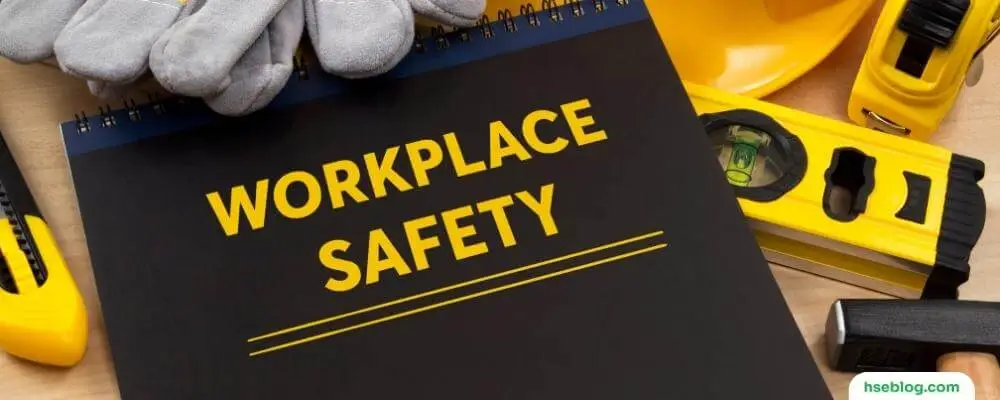Understanding the complex labyrinth of employer responsibilities is an essential task for every business, regardless of its size or industry. The comprehensive guide dissects the crucial obligations each employer must fulfill. These responsibilities stretch far beyond merely offering wages for services rendered; they involve providing a safe and secure work environment, acknowledging and respecting employee rights, imparting necessary training, and complying with the varied laws governing the workplace.
This guide isn’t solely for established business owners or budding entrepreneurs; it’s also an enlightening resource for employees who wish to understand their rights and the responsibilities their employers should be undertaking. By delving into this comprehensive exploration of employer duties, readers will gain invaluable insights into the foundational elements of the employer-employee relationship.
So, whether you’re managing a multinational corporation or a start-up business owner, this guide illuminates the path to cultivating a work culture that prizes safety, fairness, and respect. And for employees, it serves as a beacon, enhancing your awareness of what you can and should expect in the workplace. Let’s embark on this enlightening journey, exploring the 25 key responsibilities employers should know and incorporate into their daily business operations.
What is Employer?
An employer is a person, organization, company, or firm that hires and pays individuals, known as employees, for their work or services. Employers compensate for these services through wages, salaries, or other benefits. They also have certain legal and ethical responsibilities, which include providing a safe working environment, adhering to labor laws, offering fair pay, and not discriminating in their hiring practices.
Employers can range from small businesses with just one employee to multinational corporations with tens of thousands. The relationship between an employer and an employee is often formalized through a contract or agreement, which outlines the duties and responsibilities of both parties.

Employer’s Responsibilities
Employers have numerous responsibilities to ensure their employees’ well-being and fair treatment. While the specific responsibilities may vary depending on local labor laws and regulations, here are 25 important employer responsibilities that are generally applicable:
1. Health, Safety, and Welfare of Employees and Others
The health, safety, and welfare of all workers is a primary responsibility of employers, and understanding who is responsible for workplace health and safety is critical—regardless of the employees’ contract or status, whether they are full-time, part-time, temporary, casual, remote workers, trainees, or contractors. This duty entails creating and maintaining a work environment that minimizes risks and fosters well-being. It involves regular checks and assessments of working conditions and facilities to promptly identify and rectify potential hazards.
Familiarizing all workers with emergency procedures is also part of this responsibility, ensuring swift and efficient action in critical situations. By fulfilling these duties, employers create a workplace that not only complies with safety regulations but also supports the health and welfare of its workforce.
2. Provision of a Safe Work Environment
Employers are responsible for providing a safe and healthy work environment that includes the physical space and the systems of work, machinery, and equipment the employees use. These tools and spaces must be kept in good working order through regular maintenance and checks, promptly addressing any issues. The working conditions must cater to health, safety, and welfare requirements, encompassing proper ventilation, comfortable temperatures, suitable lighting, and clean restrooms.
Furthermore, if the employer provides accommodation to the workers, they must ensure it is safe and habitable. By attending to these factors, employers create an environment conducive to productivity and well-being, where employees can perform their duties without compromising their health and safety.
3. Health and Safety of Visitors and Equipment Users
Employers are responsible for ensuring the health and safety of their employees, and anyone who visits the workplace, uses company equipment, or could be impacted by the company’s activities. This extends to a broad spectrum of individuals, including clients, customers, contractors, and the general public.
To uphold this responsibility, employers must ensure regular maintenance and safe equipment usage and provide clear instructions to all users to prevent misuse or accidents. It also involves implementing necessary safety measures and protocols to protect visitors from potential hazards within the workplace. This comprehensive approach to safety ensures that everyone who interacts with the company in any capacity is safeguarded from harm.

4. Personal Protective Equipment (PPE)
When risks in the work environment cannot be entirely eliminated or adequately controlled by other methods, the employer is responsible for providing appropriate Personal Protective Equipment (PPE) to the workers at no cost. PPE acts as a last line of defense against potential hazards and could encompass a wide range of items such as helmets, gloves, eye protection, high-visibility clothing, safety footwear, and harnesses, depending on the nature of the job and its associated risks.
However, merely providing PPE is insufficient; employers must also ensure workers are adequately trained in its correct use. This includes understanding when and how to wear it, checking for wear and tear, and cleaning and storing it properly. Employers can further reduce the risk of injury or harm to their employees by providing and effectively managing PPE.
5. Risk Assessment
Risk assessment is a crucial responsibility of employers that involves a systematic process to understand the potential hazards within the workplace, who could be affected, and how harm might occur. This is not a one-time process but a dynamic activity that needs to be regularly revisited, especially when changes occur in the workplace. The primary objective is to eliminate these hazards or minimize their impact if they cannot be completely removed.
Once potential risks have been identified and evaluated, the employer must implement appropriate control measures to manage these risks and prevent accidents or health issues. These measures could range from changes in work practices and the use of protective equipment to safety training. Following the implementation, the employer must adhere to these safety controls, fostering a safer work environment.
6. Employer’s Liability Compulsory Insurance
Employer’s Liability (Compulsory) Insurance is a legal requirement for employers, providing financial coverage for the potential cost of compensating employees who might get injured or become ill due to their work. This insurance acts as a safety net, protecting the employer from significant financial strain and the employee from potential loss of income or medical expenses.
The certificate of insurance must be prominently displayed in the workplace where employees can easily read it. This is a legal requirement and helps reassure employees that they are financially protected in the unfortunate event of a work-related injury or illness. This contributes to building a culture of trust and safety within the organization.

7. Health and Safety Management
Health and safety management is a vital part of an employer’s responsibilities, necessitating the creation of a comprehensive health and safety policy. This policy should clearly outline the company’s approach toward maintaining a safe and healthy workplace, defining practices, responsibilities, and procedures to manage and mitigate potential risks.
An important aspect of this policy is appointing a competent person or team to oversee and implement these health and safety measures. This could be an internal staff member with the appropriate skills and knowledge or an external consultant. By designating a competent individual or team, employers ensure dedicated oversight of health and safety matters, promoting an organized, consistent, and systematic approach to workplace safety.
8. Emergency Plans
Emergency planning is a critical aspect of an employer’s responsibility to ensure the safety and well-being of their workforce. Employers must develop comprehensive emergency plans, which outline the procedures to be followed in various emergencies. This may encompass evacuation procedures, protocols for dealing with dangerous equipment or substances, and communication strategies during crises.
These plans must be clearly communicated to all employees and are readily accessible. To ensure these plans’ effectiveness and familiarize employees with emergency procedures, it may be necessary to conduct regular drills or simulations. This proactive approach can minimize harm and disruption when emergencies occur, reinforcing the overall safety culture within the organization.
9. Welfare Facilities
Employers are required to provide basic welfare facilities that contribute to the overall well-being of their employees. These include clean toilets, handwashing facilities with soap and warm water, and access to fresh drinking water. The provision of these facilities ensures that employees can meet their basic hygiene needs while at work, which is crucial for their health and comfort.
Additionally, these facilities can help prevent the spread of diseases and thus contribute to a healthier and more productive workplace. The quality, cleanliness, and accessibility of these facilities should be maintained to a high standard to respect employees’ dignity and promote their welfare.

10. Safety Training
Safety training is a fundamental responsibility of employers, as it equips employees with the necessary knowledge and skills to navigate their workplace safely. Employers must provide their staff appropriate, comprehensive, and cost-free health and safety training. This training could encompass a range of topics, such as potential hazards in the workplace, best practices for safe operation, correct equipment utilization, and emergency procedures.
This training aims to reduce workplace accidents and injuries by ensuring that all employees are well-informed about the potential risks in their work environment and are prepared to handle them effectively. It also fosters a safety-oriented culture where employees are proactive and confident in maintaining their health and safety and that of their colleagues.
11. Consultation
Consultation is a crucial part of maintaining a safe workplace. Employers must consult with their workers on health and safety issues, ensuring their voices are heard, their concerns are addressed, and their knowledge is utilized to create a safer work environment. This can be accomplished through direct communication or through a safety representative who has been either elected by the workforce or appointed by a trade union.
By engaging in consultation, employers acknowledge that employees, as the ones directly interacting with the work environment, often have firsthand insight into potential hazards and can contribute valuable suggestions for mitigating risk and improving safety measures. This active engagement promotes a workplace culture of safety, cooperation, and shared responsibility.
12. Health and Safety Law Information
Informing employees about health and safety laws is critical to employers’ responsibilities. Employers are legally obliged to make this information accessible by displaying a health and safety law poster in a conspicuous workplace location or providing each employee with a leaflet containing the same information. This measure ensures that all employees know their rights and responsibilities under health and safety law and the employer’s obligations.
By doing so, employers foster a work environment where everyone understands and contributes to the overall safety of the workplace.

13. Reporting of Accidents and Dangerous Occurrences
Employers are responsible for reporting certain types of work-related accidents, diseases, and dangerous occurrences to the relevant authorities, either the local authority or the Health and Safety Executive (HSE), depending on the type of business and the nature of the incident. This could involve serious injuries, certain illnesses, and near-miss events that could have led to these.
Reporting these incidents is not just a legal obligation, but it’s also crucial for tracking potential safety issues and identifying trends in the workplace. This information helps both the organization and the relevant authorities understand where improvements can be made and how similar incidents can be prevented in the future, thereby enhancing the overall safety of the workplace.
14. Induction Training for New Employees
Induction training is critical to integrating new employees into the workplace, ensuring they have the knowledge and skills to perform their duties safely and effectively. It’s an employer’s responsibility to provide such training, which should encompass a comprehensive introduction to the work environment, the job-specific procedures they’ll be expected to follow, the equipment they’ll be using, and any materials they’ll be working with.
Training should extend beyond a simple introduction or overview; it should provide practical guidance and instruction, aiming to minimize the potential for workplace accidents or errors. By investing in thorough induction training, employers enhance their workforce’s safety and competence and contribute to a positive, informed, safety-conscious company culture.
15. Chemical Safety
Chemical safety in the workplace is paramount due to the potential hazards associated with improper handling and storage. Employers are responsible for ensuring that any chemicals used in the workplace are managed with utmost care. This includes providing appropriate containment and storage facilities to prevent accidental exposure or spillage and implementing procedures for safely handling these substances.
Additionally, workers should be thoroughly informed about the nature of the chemicals they are working with, their potential hazards, and the protective measures to follow while handling them. This might involve training sessions, providing access to Safety Data Sheets (SDS), and supplying suitable personal protective equipment (PPE). By adhering to these practices, employers can significantly reduce the risk of chemical-related incidents and protect the health and safety of their workers.

16. Risk Communication
Risk communication is a crucial aspect of workplace safety. It involves employers actively informing employees about the hazards associated with their roles and the measures implemented to manage and control these risks. This goes beyond identifying potential dangers; it requires clear and ongoing communication to ensure employees fully comprehend the risks and precautions. This includes providing appropriate training to equip employees with the necessary knowledge and skills to work safely and effectively.
Moreover, it involves supervision to verify that safety protocols are correctly adhered to. By actively communicating risks and safety measures, employers help foster a culture of safety where employees are empowered to contribute to their own and their coworkers’ well-being in the workplace.
17. Safe Handling and Storage of Substances
The handling and storing of hazardous substances are fundamental areas of concern in many workplaces. If such substances are used in a workplace, employers must ensure they are managed safely and responsibly. This involves storing the substances appropriately, in properly labeled containers, and in designated areas with the necessary safety measures. In addition, adequate ventilation should be ensured to prevent harmful exposure, and suitable personal protective equipment (PPE) should be provided to employees working with these substances.
Moreover, employers must train employees on the safe handling of these substances, which includes correct procedures for use, steps to prevent spills or leaks, and actions to take in case of an accident. By adhering to these regulations, employers can minimize the potential risks associated with hazardous substances, thereby safeguarding the health and safety of their employees.

Additional Employer’s Responsibilities
In addition to the responsibilities outlined above, there are several more duties an employer must consider in the context of health and safety:
- Protective Clothing and Equipment: When hazards can’t be avoided or controlled, employers must provide protective clothing and equipment free of charge.
- Health Monitoring: Employers should monitor their employees’ health conditions, especially if exposed to hazardous materials or stressful work conditions. This could include regular medical check-ups or health surveys. This helps to identify any potential work-related health issues early and allows for prompt intervention.
- First Aid Facilities: Employers must provide adequate first aid facilities, which include having a stocked first aid kit, trained first aiders, and clear information about the location of the kit and the identity of first aiders. This ensures immediate treatment is available should an employee become injured or ill at work.
- Workplace Adaptations for Employees with Disabilities: Employers must make reasonable adjustments to the workplace to accommodate employees with disabilities. This could include modifying physical environments, providing special equipment, or adjusting work patterns. Employers should consult with disabled employees to understand their needs and make appropriate arrangements.
- Psychosocial Well-being: Employers are responsible for their employees’ physical, safety, and mental and emotional well-being. This may include ensuring a respectful and harassment-free workplace, supporting stress management, and having resources available for employees struggling with mental health issues.
- Regular Safety Checks and Maintenance: Employers must ensure that regular safety checks are carried out to identify potential hazards before they cause harm. This extends to maintaining all machinery, equipment, and workplace infrastructure. Any issues identified should be promptly resolved to maintain a safe working environment.
- Ongoing Training and Skill Development: Workplace conditions and hazards can change over time, as can regulations and safety practices. Employers are responsible for providing ongoing training and skill development for employees. This ensures everyone in the organization stays up-to-date with current health and safety standards and practices and can adapt to new or changing conditions in the workplace.
- Promote a safety culture: Employers should foster a culture of safety in the workplace, encouraging employees to report hazards, near misses, and accidents without fear of reprisal.
Conclusion
In conclusion, understanding and adhering to these 25 important employer responsibilities are legal requirements and critical elements in building a harmonious, productive, and successful work environment. By fully embracing these responsibilities, employers can foster a safety, respect, and fairness culture, ultimately improving employee satisfaction and business performance.
Regardless of your role in the organization, being aware of these duties ensures a comprehensive understanding of workplace dynamics and contributes to improving the workplace. Remember, knowledge is power, and understanding these responsibilities is the first step toward a successful and legally compliant business operation.

